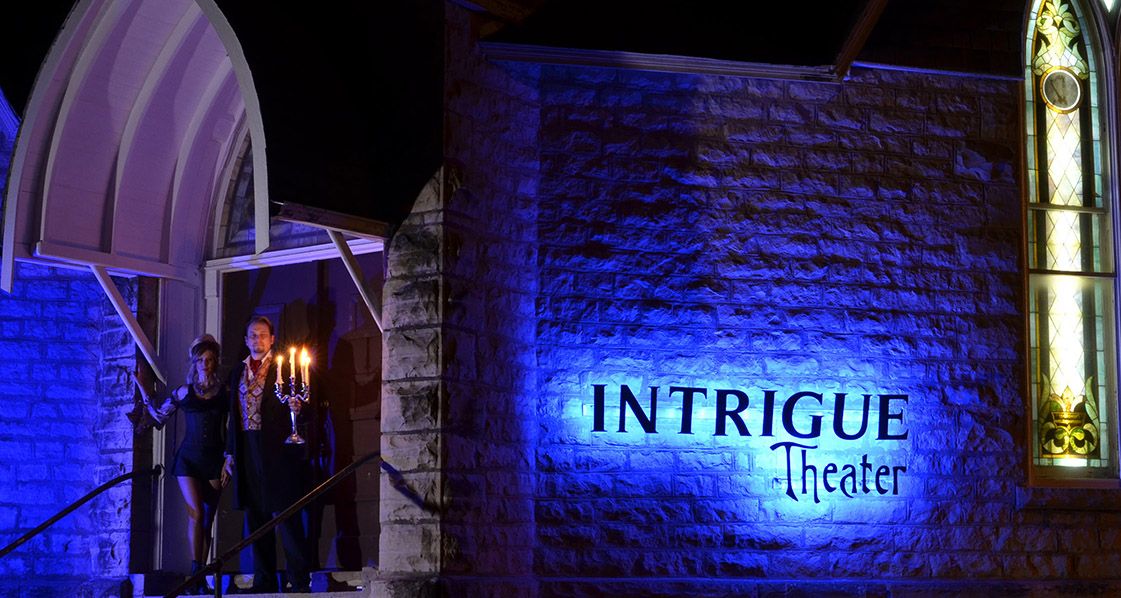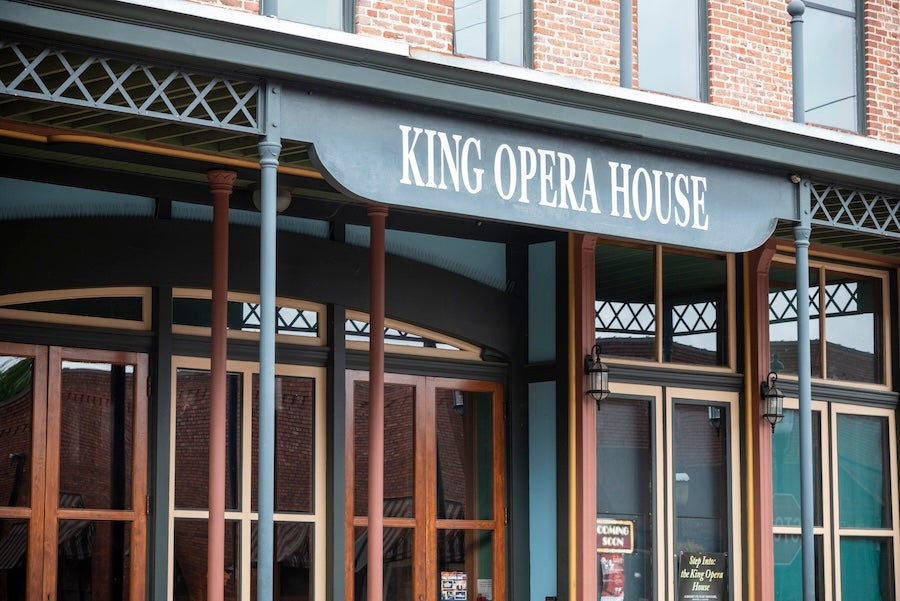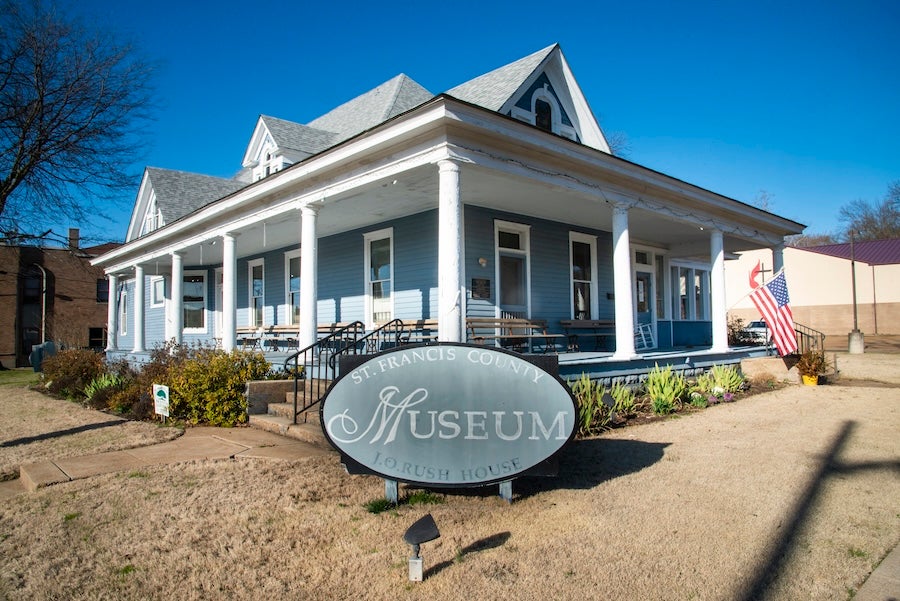Haunted Arkansas
Every Arkansas city puts its own spin on Halloween— a trick-or-treat on the square, a costume parade, or a good old-fashioned haunted house. But you don’t have to wait for Halloween night to get goosebumps. Arkansas serves up spooky fun year-round. Brave a stay at a haunted hotel, wander through ghost towns swallowed by time, or chase legends of mysterious lights and swamp-dwelling monsters. From current Halloween-themed events to historic opera houses where spirits still take the stage, these adventures promise an eerie thrill.

Eureka Springs
Eureka Springs goes all in with week-long fun during October. Join the zombie invasion as part of the horde or as a survivor, get hyped on spooky music, learn the Thriller dance, participate in the zombie scavenger hunt, shop at the Macabre Market, witness the spectacle of the Brain Buffet, experience the nightmarish film festival and explore the haunted town. Anytime of year, stay in the 1886 Crescent Hotel & Spa, “America’s Most Haunted Hotel,” or the 1905 Basin Park Hotel, where you can take ghost tours or participate in paranormal investigations.
Ghost Town of Rush

The remnants of Rush are now haunting reminders of a once-bustling community that has been reclaimed by nature. Deep within Arkansas' Buffalo National River corridor, zinc miners once rushed to stake claims in the 1880s in this 1,300-acre historic mining district. The boom town thrived around the famous Morning Star Mine until World War II, when mills were dismantled and residents began abandoning the remote community. After the post office closed in the 1950s and the last inhabitants departed in the 1960s, Rush was left to its ghosts and the pages of history.
Today, visitors can explore the ghost town through walking trails and historic markers that tell the tale of life once lived in the old log cabins, crumbling stone foundations, and abandoned mine ruins scattered throughout the wilderness.
East Calico Rock
In Calico Rock, about 20 abandoned buildings from a once-thriving railroad boomtown stand frozen in time just steps from today's vibrant downtown. Walk the streets of this ghost town to see the remnants of a pool hall, barber shop, theater, café, lumberyard, telephone exchange, cotton gin, funeral parlor, and electric company—all viewable from public streets with interpretive markers sharing each building's history. The area includes part of the legendary Peppersauce Alley, named for the moonshine whiskey once traded where farmers camped overnight after selling their wares.
After exploring, check out Calico Rock's thriving present-day town center with shops, restaurants, and river views along the White River.
Important: These historic structures are dilapidated and on private property. Please view them only from the streets. Never enter the buildings for your safety and to respect property rights.
King Opera House

At the King Opera House in Van Buren, some say a ghostly figure appears under the stage lights—a young man dressed in a top hat and long Victorian cape. He's been spotted by cast and crew alike, first during the theater’s reopening in 1979 and again throughout the years. Though no one knows for sure who he is, many believe he’s tied to a love story that ended in heartbreak at the train depot a few blocks from the stage. Today, the King Opera House is still open as a venue for plays, meetings, concerts, weddings or other events.
St. Francis County Museum

In the kitchen of Forrest City’s St. Francis County Museum, a spoon and cookie disappeared—then reappeared in a different corner of the room. No one saw them move. Former director Brian Hicks had set the spoon on a microwave while talking to his sister. When he reached for it again, it was gone. Minutes later, so was her cookie. Both turned up in the same strange spot.
It’s not the only unexplained moment in the 1906 Rush-Gates House. Once home to Dr. J.O. Rush’s medical practice and surgery room, it has long had its quirks. Stop in to see exhibits that include the J.O. Rush relic collection, reconstructed doctor's office, geology and fossils from Crowley's Ridge, county, veterans, and African-American history.
Fouke Monster
Fouke, a small town located about 15 miles southeast of Texarkana, sits in the state’s far southwest corner. Surrounded by dense bottomlands, swamps, and creeks, including Boggy Creek. It’s the setting for the Fouke Monster legend, which first drew local attention after multiple sightings in the 1960s. In May 1971, a family in rural Fouke reported an attack in their home, with one member treated at Texarkana hospital. That incident drew media coverage in the Texarkana Gazette, which in turn spurred further reports. Some of those witnesses included hunters, respected citizens, even a police officer. The story caught the eye of filmmaker Charles B. Pierce, who built his 1972 film The Legend of Boggy Creek around the legend.
White River Monster
On the White River near Newport, anglers once whispered about a creature that rocked boats and broke nets. Reports stretch back more than a century, but in the summer of 1937 the story made headlines when witnesses described a gray, spiny-backed beast as long as a boxcar. Some said it had the face of a catfish, others compared it to an elephant seal. Whatever it was, crowds lined the riverbank hoping for a glimpse.
The mystery never went away. In 1973, the Arkansas Legislature even declared a section of the White River the creature’s “refuge,” protecting the monster should it ever resurface. Today, the White River Monster remains one of Arkansas’ strangest legends.
